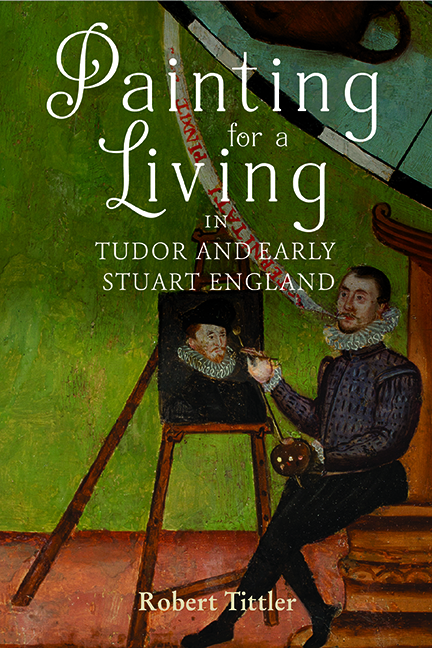Book contents
- Frontmatter
- Dedication
- Contents
- List of Illustrations
- Preface
- Acknowledgements
- Editorial Conventions and Abbreviations
- Part I Introduction
- Part II Kinds of People
- Part III Particular Specialities
- Part IV Ways and Means
- Part V Conclusion
- Bibliography
- Index
- STUDIES IN EARLY MODERN CULTURAL, POLITICAL AND SOCIAL HISTORY
1 - Painters before the Reformation
Published online by Cambridge University Press: 26 May 2022
- Frontmatter
- Dedication
- Contents
- List of Illustrations
- Preface
- Acknowledgements
- Editorial Conventions and Abbreviations
- Part I Introduction
- Part II Kinds of People
- Part III Particular Specialities
- Part IV Ways and Means
- Part V Conclusion
- Bibliography
- Index
- STUDIES IN EARLY MODERN CULTURAL, POLITICAL AND SOCIAL HISTORY
Summary
In pre-Reformation England men and women throughout the realm lived in a richly coloured environment. Painted works of one sort or another were simply ubiquitous, but not necessarily in the forms or locations which their Elizabethan grandchildren would find familiar. Much of that work, and especially in the ecclesiastical settings of late medieval Catholic worship, will have taken the form of decorative painting. The building and decoration of the great country houses one associates with the Elizabethan and Jacobean years, many of them renovated or built on the bones of dissolved monastic houses, still lay well over time's horizon. A great deal of controversy has surrounded efforts to date the great ‘rebuilding of rural England’ which, amongst its other characteristics, put a great many painters to work in the residences of the nation, but few have seen that phenomenon beginning in the early years of Tudor rule.
The production of portraiture, always front and centre in studies of Tudor painting, bore a very different and smaller profile in the early years of that dynasty. Most early painted, as opposed to sculpted, portraits appeared on walls or wood panelling, sometimes on glass, and mostly in ecclesiastical settings. Generic rood screen depictions of biblical figures, saints, and ancient kings were standard fare in many a parish church. Royal portraiture long pre-dated the Tudors, but rarely in the form of easel paintings. Tomb effigies of both Henry II and Richard I are amongst the few earliest surviving English portraits, whilst a now-lost painting of Henry III and Queen Charlotte, done in 1293, was probably a wall painting. A wall painting of Edward III done in 1363 at St Stephen's Chapel, Westminster, also survives, whilst the portrait of Richard II appears on the Wilton Diptych. It also seems likely that during or shortly after their lifetimes some English monarchs were portrayed outside London and the court. An intriguing reference in an account roll of the Gild Merchant of Reading, Berkshire, records the payment of 12d. to an unnamed painter for ‘a picture of the King for the Guildhall’.
Late fifteenth-century painters frequently engaged in media which have tended to escape the close scrutiny of modern art historical investigation.
- Type
- Chapter
- Information
- Painting for a Living in Tudor and Early Stuart England , pp. 10 - 18Publisher: Boydell & BrewerPrint publication year: 2022

